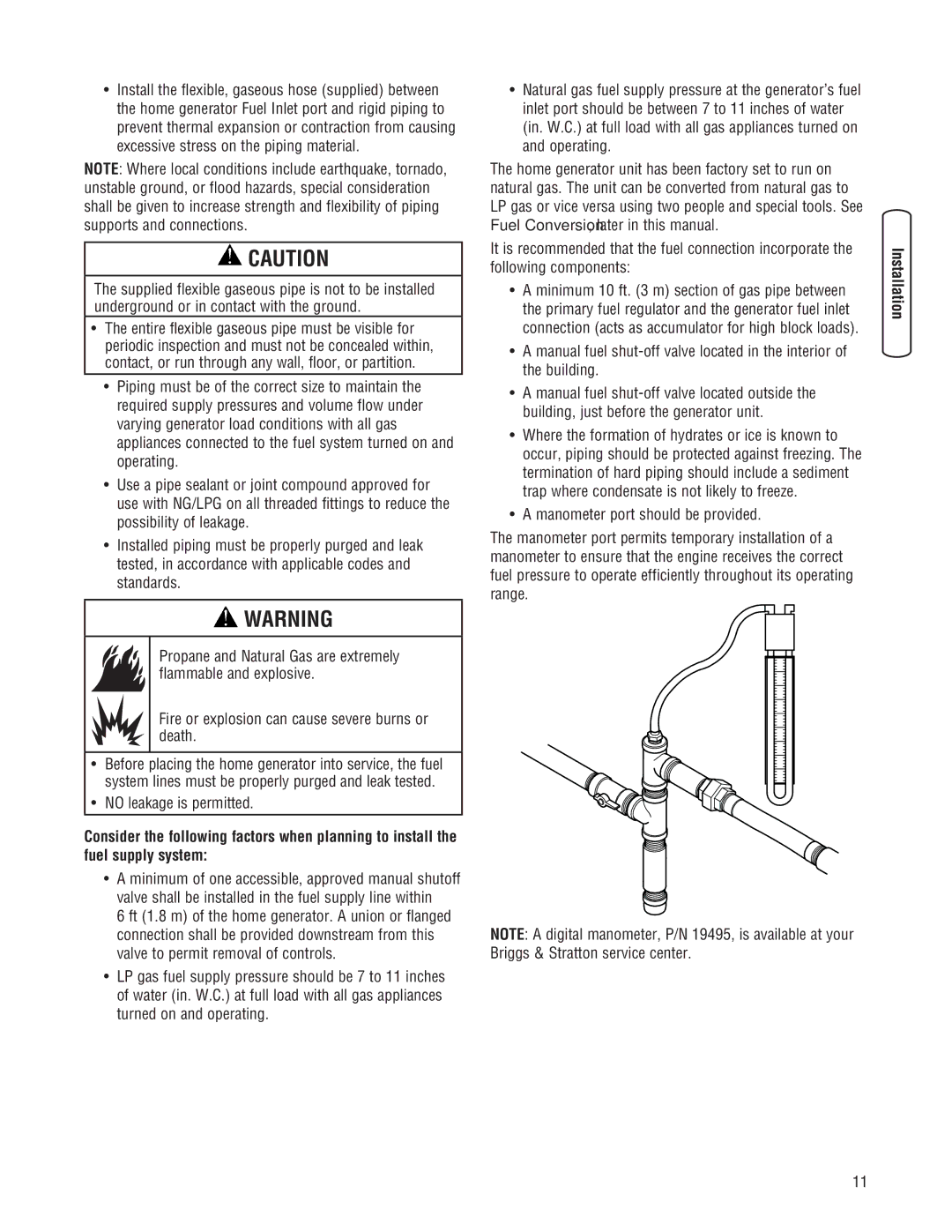45000 specifications
The Briggs & Stratton 45000 is a powerful generator that stands out in the realm of portable power solutions. Designed for a variety of applications, it is an ideal choice for homeowners, outdoor enthusiasts, and professionals alike. With a robust engine and advanced features, it ensures a reliable source of electricity when you need it most.One of the key features of the Briggs & Stratton 45000 is its impressive power output. It provides starting watts of 4,500 and running watts of 3,600, making it suitable for powering essential appliances during outages or for running tools on job sites. This generator is equipped with a durable 306cc engine that utilizes a reliable overhead valve (OHV) design for enhanced performance and efficiency. This engine type ensures lower oil consumption, reduced emissions, and quieter operation compared to traditional engines.
The generator's lightweight design and integrated handle make it highly portable. Weighing approximately 107 pounds, it is easy to transport, allowing for seamless movement from one location to another. The rugged wheels provide excellent maneuverability over uneven terrain, making it a perfect companion for camping trips, tailgating events, and outdoor projects.
Another notable feature of the Briggs & Stratton 45000 is its user-friendly control panel. Equipped with multiple 120V AC outlets, it allows users to connect various devices and appliances simultaneously. The addition of a USB port facilitates charging smartphones and tablets, catering to the modern user’s needs. The generator also includes a built-in circuit breaker to protect against overloads, ensuring the safety of connected devices.
Advanced technologies further enhance the performance and usability of the Briggs & Stratton 45000. For instance, it features a digital display that keeps users informed about the voltage output and running hours. An automatic shutoff function prevents engine damage by alerting users when oil levels are low. Additionally, the generator incorporates a pressurized lubrication system that enhances longevity and minimizes wear and tear.
To top it off, the Briggs & Stratton 45000 meets various safety standards, providing peace of mind for everyone using it. With all these features combined, the Briggs & Stratton 45000 stands as a reliable and efficient portable generator that meets the diverse power needs of users across various settings. Whether at home, on the job, or enjoying the great outdoors, this generator can be counted on to deliver dependable performance.

